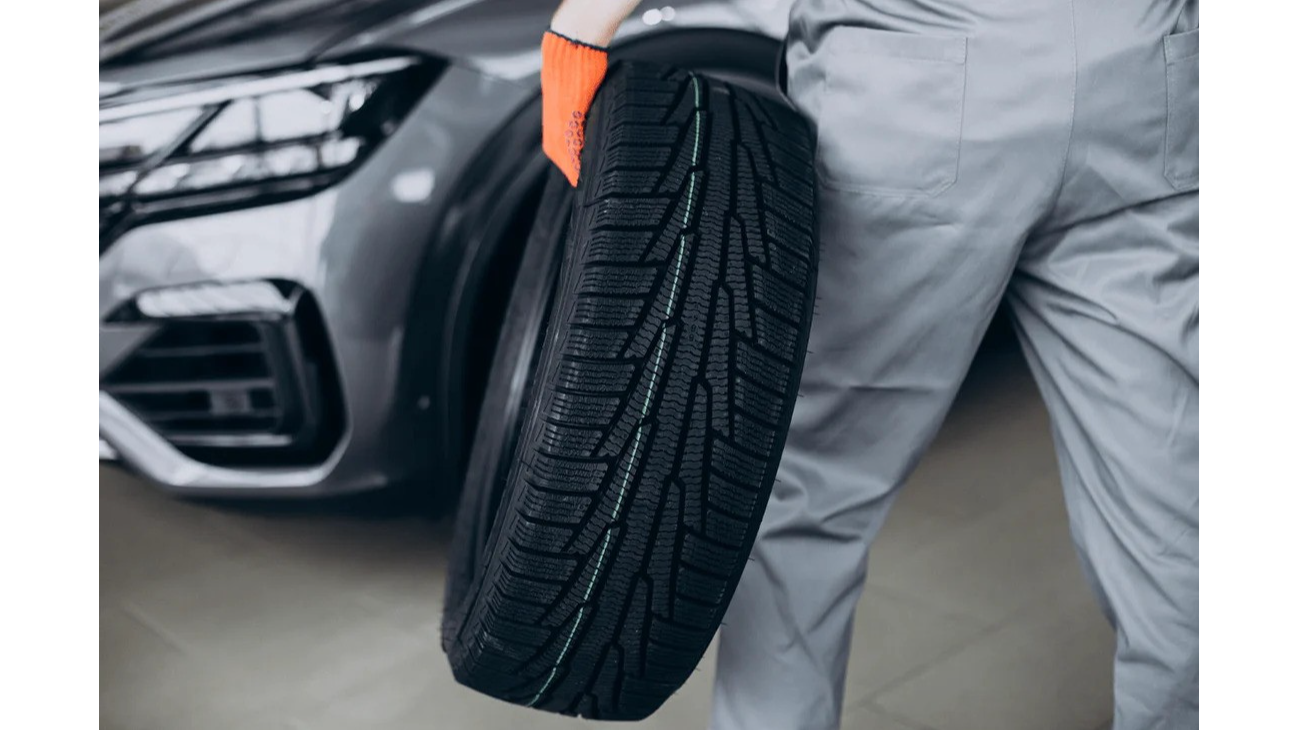Key Takeaways
- Changing a tyre on the motorway is legal, but extremely dangerous – it should only be attempted in specific, safe conditions with proper visibility and space away from traffic.
- Tyre-related issues account for 18.6% of UK motorway breakdowns, with 16,943 incidents recorded between November 2023 and February 2024.
- Smart motorways without hard shoulders make DIY repairs far too risky – professional roadside assistance is the safest option in these scenarios.
- Tyre repair kits often provide a safer, faster solution than changing spare tyres on busy motorways, allowing drivers to avoid exposure to fast-moving traffic.
- Regular tyre pressure checks and carrying emergency repair equipment can prevent most motorway tyre emergencies long before they occur.
Facing a flat tyre on the motorway creates one of the most stressful driving situations imaginable. Between the roar of traffic, limited space, and pressure to get moving again, knowing what’s legal and what’s safe is vital for every UK driver. That includes you.
It’s Legal But Extremely Dangerous – Here’s Why You Shouldn’t Risk It
Changing a tyre on the motorway isn’t against the law. That said, it ranks among the most dangerous roadside activities drivers can attempt. The combination of high-speed traffic, limited visibility, and restricted workspace creates a perfect storm for serious accidents.
Statistics paint a startling picture: between November 2023 and February 2024, tyre-related issues caused 16,943 breakdowns on British roads – that’s 18.6% of a total 90,852 incidents.
The danger stems from several factors that make motorways uniquely hazardous for repairs. Traffic travels at speeds exceeding 70mph, often with vehicles following too closely. Even on the hard shoulder, the margin for error is minimal. A moment’s inattention from a passing driver, poor visibility conditions, or a simple mistake can turn a routine tyre change into a life-threatening situation. Understanding when changing a tyre becomes too risky helps drivers make safer decisions during emergencies.
What to Do When Your Tyre Fails on the Motorway
The first moments after discovering a tyre problem determine how safely the situation will unfold. Quick, calm actions reduce risks and create the best possible outcome for everyone involved.
1. Pull Over Safely and Signal Immediately
As soon as a tyre issue becomes apparent, activate your hazard warning lights immediately. Avoid sudden braking or sharp steering movements, which can cause loss of control. Instead, gradually reduce speed while steering steadily towards the hard shoulder or nearest emergency refuge area. The key lies in smooth, predictable movements that give other drivers time to react and create space.
2. Exit Away From Traffic and Stay Visible
Once stopped, keep hazard lights activated and exit through the passenger door – always away from traffic flow. If available, put on a high-visibility vest before leaving the vehicle. Position yourself behind the safety barrier or up the embankment, maintaining distance from the live carriageway. Never stand between the vehicle and traffic, regardless of how secure the position might appear.
3. Assess Whether Self-Repair Is Safe
Before attempting any repair, honestly evaluate the situation. Consider traffic density, weather conditions, visibility, and available workspace. If the vehicle sits too close to moving traffic, conditions feel unstable, or uncertainty exists about safety, calling for professional assistance becomes the wisest choice. Personal safety always outweighs the inconvenience of waiting for help.
Smart Motorway Breakdowns – Why DIY Repairs Are Too Risky
Smart motorways present unique challenges that make self-repairs significantly more dangerous than traditional motorways with dedicated hard shoulders.
Emergency Refuge Areas vs Live Lane Breakdowns
Emergency refuge areas on smart motorways provide the only truly safe spaces for breakdowns, but they’re spaced up to 1.5 miles apart. Vehicles unable to reach these designated areas often end up stopping in live lanes – creating extremely hazardous conditions.
Without a permanent hard shoulder, drivers face impossible choices: attempt repairs in active traffic lanes or risk driving farther on damaged tyres. Not good.
Why Highways England Advises Against Self-Repair
According to Motorway Traffic Regulations, drivers are advised to notify the Highways Agency Patrol or police rather than attempt DIY repairs on smart motorways. The absence of hard shoulders means any repair work will take place mere feet from vehicles travelling at motorway speeds. Professional recovery teams, however, have specialised training, equipment, and protocols designed specifically for these high-risk environments.
The official guidance prioritises getting vehicles and occupants away from danger zones as quickly as possible, instead of attempting roadside fixes that expose people to unnecessary risks.
When Professional Help Is Your Only Safe Option
Certain conditions make professional roadside assistance not just preferable, but flat-out essential for safety.
Poor Weather and Visibility Conditions
Rain, fog, darkness, or snow dramatically increase the dangers of motorway repairs. Reduced visibility makes it harder for approaching drivers to spot stationary vehicles and people working roadside. Slippery surfaces create additional hazards when handling tools and positioning equipment. Professional recovery teams carry enhanced lighting, reflective barriers, and weather-appropriate gear designed for these challenging conditions.
Heavy Traffic and No Hard Shoulder
During peak hours or on congested routes, the sheer volume of passing traffic makes repairs extremely hazardous. Vehicles may be travelling slower but in much greater numbers, with reduced stopping distances and attention spans. Without proper hard shoulder space, the margin for error disappears completely. Professional services can deploy traffic management measures and positioning strategies unavailable to most drivers.
Quick Fixes vs Full Tyre Changes
Understanding the difference between emergency repairs and complete tyre changes can determine the safest course of action during motorway breakdowns.
Why Repair Kits Beat Spare Tyres on Motorways
Modern tyre repair kits offer significant safety advantages over traditional spare wheel changes on motorways. These kits allow drivers to seal punctures without removing wheels, eliminating the need to work in cramped spaces beside fast-moving traffic. The process typically takes just minutes – and even better, it doesn’t require lifting heavy wheels or positioning jacks on potentially unstable surfaces.
While spare wheels provide reassurance, many newer vehicles now come equipped with repair kits due to space and weight considerations. These kits can prove particularly valuable on motorways where minimising exposure time is critical.
Common Driver Misconceptions About Roadside Repairs
Many drivers overestimate their ability to safely change tyres on motorways, often based on their experience in car parks or quiet roads. Motorway conditions create entirely different challenges: constant vibration from passing traffic, limited workspace, time pressure, and the psychological stress of working near high-speed vehicles.
Another misconception involves the permanence of repairs. Temporary fixes using repair kits require follow-up attention at proper service facilities, but they provide safe mobility to reach those facilities. Professional tyre fitting services are available 24/7 in many UK areas, offering complete solutions without roadside risks.
Stop Breakdowns Before They Start
Prevention remains the most effective strategy for avoiding dangerous motorway tyre emergencies.
Regular Pressure Checks Significantly Reduce Risk
National Highways advises drivers to check tyres regularly, emphasising tread depth and inflation as key factors in preventing breakdowns. Underinflated tyres increase rolling resistance, reduce fuel efficiency, and suffer excessive wear – all contributing to higher failure rates. The legal minimum tread depth in the UK stands at 1.6mm, though many experts recommend replacement at 3mm for optimal safety margins.
Driving with properly maintained tyres dramatically reduces the likelihood of sudden failures, particularly the catastrophic blowouts that create the most dangerous motorway scenarios.
Essential Emergency Kit for Every Boot
A well-stocked emergency kit provides options during breakdowns without requiring extensive repairs. Essential items include a reliable tyre pressure gauge, portable inflator, puncture repair kit, high-visibility clothing, and warning triangles. These tools enable quick assessments and minor fixes that might prevent the need for major roadside work.
Modern portable inflators can address slow leaks or pressure drops, potentially providing enough mobility to reach safer repair locations. Quality repair kits offer permanent solutions for many common puncture types, eliminating the exposure risks associated with wheel changes.
Be Prepared With Professional-Grade Repair Solutions
Investing in quality emergency equipment completely changes how drivers handle tyre problems, shifting from reactive panic to proactive problem-solving. Professional-grade repair kits provide the reliability and effectiveness needed during genuine emergencies, offering peace of mind that extends beyond the immediate repair.
These complete solutions typically include multiple repair plugs, professional-quality tools, and clear instructions designed for stressed situations. The investment proves worthwhile when measured against potential recovery costs, delay expenses, and most importantly, personal safety risks.
The combination of proper maintenance, quality emergency equipment, and sound judgement about when to attempt repairs versus seeking professional help creates the safest approach to motorway tyre emergencies. Remember, no repair is worth risking personal safety – and professional help is always available when conditions get too dangerous for DIY solutions.


